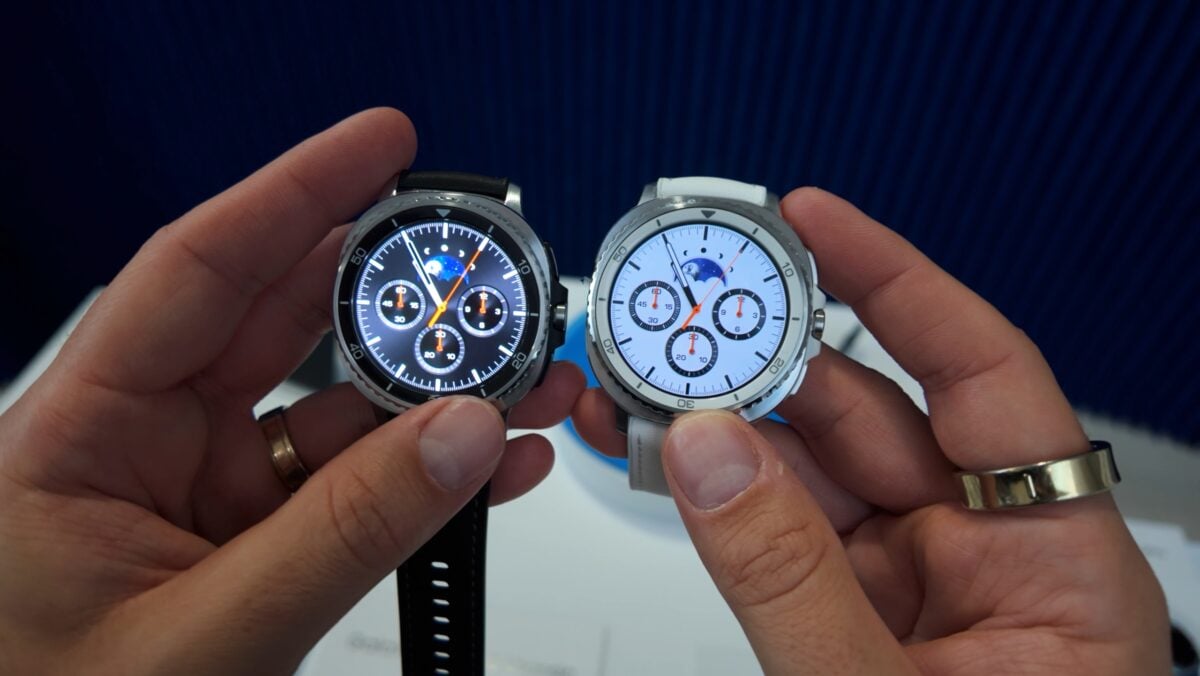- iPhone 17 Leak Says eSIM Will Finally Allow for Bigger Batteries PCMag
- iPhone 17 lineup to be unveiled at Apple’s event: What to expect Gulf News
- iPhone 17 series battery capacity leaks ahead of launch – GSMArena.com news GSMArena.com
- Apple Hints at iPhone 17 Models Lacking SIM Card Slot in More Countries MacRumors
- iPhone 17 Pro: These two features will make you want to upgrade 9to5Mac
Author: admin
-
iPhone 17 Leak Says eSIM Will Finally Allow for Bigger Batteries – PCMag
-

Pakistan to host Sri Lanka for ODIs in stacked home season during November
Islamabad [Pakistan], September 8 (ANI): Pakistan will host Sri Lanka for a three-match ODI series later this year, starting from November 11 onwards, reported the International Cricket Council (ICC) on Monday.
This series will be a part of an absolutely stacked home season for them. A bilateral ODI series against the island nation adds to what is already a packed home season for the Pakistan men’s side. Also to visit their shores is South Africa for an all-format tour starting in October.
Meanwhile, the recently announced ODI series against Sri Lanka will be followed by the two nations featuring in a T20I tri-series, which will also include Afghanistan – marking Pakistan’s maiden tri-series at home, as per ICC.
All three matches will be played at the Rawalpindi Cricket Stadium, which also played host to matches at this year’s ICC Men’s Champions Trophy.
The ODI series will be Sri Lanka’s first in Pakistan since 2019, which is when the hosts emerged victorious in a three-match series by 2-0.
Their last meeting in the format was back during the 2023 Men’s Cricket World Cup when Pakistan clinched a six-wicket win over Sri Lanka.
Pakistan, who recently clinched a tri-series win over Afghanistan and the UAE, will next feature in the eight-team Asia Cup in the UAE set to begin on September 9, kickstarting their campaign against Oman on September 12.
The continental tournament followed by the shortest format contests during their home season provides them with an opportunity to iron out their side ahead of next year’s ICC Men’s T20 World Cup in India and Sri Lanka.
ODI series schedule versus Sri Lanka:
November 11 – 1st ODI, Rawalpindi
November 13 – 2nd ODI, Rawalpindi
November 15 – 3rd ODI, Rawalpindi. (ANI)
(This content is sourced from a syndicated feed and is published as received. The Tribune assumes no responsibility or liability for its accuracy, completeness, or content.)
Continue Reading
-

WWE Hall of Famer Kurt Angle Reveals Why He Decided To Retire
Kurt Angle’s final run in WWE would have looked a lot different if the Olympic gold medalist had his way.
Angle returned to WWE in 2017 after 11 years away from the company. He was inducted into the Hall of Fame over WrestleMania 33 weekend in Orlando before being introduced as the new General Manager of Raw the night after ‘Mania.
Joe Camporeale-Imagn Images Despite feeling fit enough to get back into a WWE ring, Angle was restricted to General Manager duties for his first few months back in the old New York territory. He would eventually lace his boots back up for a major WrestleMania 34 program alongside Ronda Rousey against Triple H and Stephanie McMahon, but the former WWE Champion felt like he had a lot more to offer before then.
Speaking to The Undertaker on the Six Feet Under podcast, Angle explained he was ready to wrestle the moment he came back to WWE, but Vince McMahon shared a different viewpoint.
“The thing is, when I came back to WWE, after I left for 11 years, when I came back, I was wrestling really good, but Vince had a different idea. He wanted to induct me into the Hall of Fame first before I wrestled. So I did the Hall of Fame. Then Vince came to me and said, ‘Hey, we wanted to make you the GM of Raw. I said, ‘Vince, I want to wrestle.’ He said, ‘We’ll get to that.’”
– Kurt Angle
But as WWE ‘got to that’ with Angle’s in-ring return, the former TNA World Champion’s body was breaking down following a lengthy career that had taken its toll on him, with multiple major injuries and surgeries proving too much to bear as he approached his 50s.
“So he makes me GM of Raw, and during this time, my knees are arthritic and they’re getting tighter, and I’m less active, and for eight months, I didn’t do anything. Then all of a sudden, he’s like, ‘Kurt, I want you to wrestle.’ That’s gonna be a problem.”
– Kurt Angle
Angle’s knee issues caused his performance levels to drop due to his decreasing mobility and athleticism. This would provide Angle with his reason for retiring in 2019.
“When I got in there, I looked like crap. I mean, I couldn’t do anything. It made me want to retire earlier than I wanted to. That’s why I retired with Baron Corbin at WrestleMania 35. I didn’t want people to look at me and say, ‘Gosh, He used to be great, but now…’ Yeah. I didn’t want that. So I decided, ‘This is it.’”
– Kurt Angle
Angle would finish up his career with a quick loss to Baron Corbin at WrestleMania 35. The decision to pair Angle with Corbin was heavily criticised by many fans, with some of Angle’s most legendary opponents on the WWE roster at the time such as AJ Styles, Rey Mysterio and Samoa Joe.
(H/T Fightful for the transcriptions)
The Latest On AEW, WWE & More
Ronda Rousey Reveals Why She Has No Reason To Attempt A WWE Comeback
AJ Lee’s Top 5 Career Moments Ahead Of Her Rumored WWE Return
1000 Days Down, Forever To Go: A Detailed Look At Athena’s Historic ROH Title Reign
Ric Flair Refuses To Be Compared To Former World Heavyweight Champion
Continue Reading
-

Woman who lost 70+ kgs shares 5 daily habits that helped her lose weight and keep it off: ‘The real challenge was…’
Weight loss journeys often inspire, but what truly matters is what happens after the numbers on the scale drop. Many people struggle with maintaining their hard-earned results, slipping back into old habits. But lasting transformation is possible with the right mindset and daily choices.
Kate Daniel shares her journey of losing 70 kg, emphasising the importance of mindset and daily habits over perfection.(Instagram/@bariatric_chic) A woman named Kate Daniel who lost over 70 kilos, shares in her July 21 Instagram post 5 simple yet powerful habits that helped her not just lose the weight but keep it off forever. (Also read: Woman lost 14 kg using ChatGPT, shares the exact prompts that helped her lose weight: ‘I wasn’t ready to hit the gym’ )
Kate explains in her post, “No one talks enough about what it really takes to keep going… Without fear, without obsession, without feeling like you’re constantly starting over. When I began my weight loss journey, I thought the hardest part would be losing the weight itself. But it wasn’t.”
She continues, “The real challenge was UNLEARNING everything I’d been taught about what success should look like and LEARNING how to trust myself again after decades of diets, disappointment, and doubt.”
According to her, here’s what actually shifted behind the scenes while losing 70 kg (154 lbs) and building a lifestyle she could stay consistent with:
1. Reduced the pressure
Kate says, “I stopped tying my worth to the number on the scale or how perfect I was. Pressure didn’t make me better, it only made me burnt out. But when I chose ease, I created real momentum.”
2. Focused on emotional healing
She shares, “It was never just about what I ate. It was about how I felt when life got heavy. Healing my relationship with stress, shame and self-worth changed everything.”
3. Unlearnt diet mentality
According to Kate, “No more chasing perfect days. No more guilt for being human. I started choosing what supported my energy and mind—not just what fit a macro plan.”
4. Built micro habits that felt safe
She explains, “Tiny, consistent actions. Habits I could do on hard days, tired days, messy days, not just when motivation was high. That’s what kept me moving forward.”
5. Lowered the bar, but not the standard
Kate adds, “I made my daily goals reachable. Some days it was a walk. Some days it was water. Some days it was just getting out of bed and trying again. Consistency doesn’t come from perfection, it comes from staying in the game.”
Kate concludes, “If you’re still stuck thinking you have to hustle, restrict, or punish yourself into success… breathe. You don’t have to earn your freedom. You just have to stop giving up on yourself. This isn’t just weight loss. This is a whole new way of living.”
Note to readers: This report is based on user-generated content from social media. HT.com has not independently verified the claims and does not endorse them.
This article is for informational purposes only and not a substitute for professional medical advice.
Continue Reading
-

Path to Tamer Town Archives
Crazy Goat Games will be releasing Path to Tamer Town on Nintendo Switch 2, the company has announced. It should be out in 2026.
Path to Tamer Town is not to be confused with Tamer Town, which was previously announced. This newly-announced project offers procedurally generated roguelite adventures while Tamer Town is about city management.
Here’s some additional information:
Continue Reading
-

How FIFA already made millions on 2026 World Cup tickets before putting them on sale
FIFA has made millions of dollars selling fans the “right to buy” 2026 World Cup tickets before putting the actual tickets on sale.
Soccer’s global governing body withheld nearly all World Cup ticketing details until last week, when it announced timelines, lottery phases and some prices.
Over the past year, though, on its FIFA Collect platform, it has sold tens of thousands of digital tokens that promise buyers the ability to purchase one or two World Cup tickets at a to-be-determined later date. The tokens themselves cost hundreds of dollars. The buyers will get guaranteed access to ticket(s) for a specific match, in an unknown section, but still must pay full price for those tickets — a price that FIFA hasn’t yet set.
According to spinoff websites that track FIFA Collect sales, and according to data sent by users to The Athletic, the platform has sold over 30,000 of these so-called “Right To Buys” for a total of well over $10 million. One dataset pegged the total take related to the “RTBs” at more than $20 million. Another said they’ve yielded more than $14.3 million in direct sales, and more than $25 million including sales that might feature an RTB or could indirectly lead to one.
An exact figure is impossible to calculate, because some of the RTB tokens were bundled with tickets to 2025 Club World Cup matches or other digital collectibles, and some were obtained via promotions or as rewards. But the profits tied to RTBs very likely exceed $15 million. All sales on FIFA Collect, of the RTBs and other items, have yielded nearly $29 million on the primary market, according to the spinoff site FIFA Collect Info, whose developer told The Athletic that he built the database using publicly-available blockchain data and FIFA’s API.
The RTB tokens are essentially, and solely, a costly shortcut to 2026 tickets, allowing purchasers to bypass lotteries or first-come-first-served digital queues.
“Owning an RTB does not include the cost of the ticket(s) itself,” FIFA Collect clarifies on an FAQ page. “It only gives you access to purchase the ticket(s).”
Examples of what FIFA Collect RTBs look like for 2026 World Cup matches in Houston, Monterrey and Vancouver (Photos: FIFA Collect)
FIFA Collect: From cheap NFTs to expensive RTBs
The tokens have not always been advertised on FIFA’s main website. But FIFA Collect is the governing body’s “digital collectibles platform,” and “a collaboration between FIFA and Modex,” a blockchain service provider. It is operated by Modex but owned by FIFA. On a Discord call with users in April, a FIFA Collect administrator said: “We work in very close contact with FIFA. We’re part of FIFA. … We work in very close contact with FIFA Ticketing on everything, and also with FIFA management on everything.” All payments on the site go through the FIFA Blockchain.
And FIFA itself, in emails and on social media, has promoted the platform as a route to 2026 tickets.
“Get the right-to-buy tickets to the USA’s opening match at #WeAre26 only on @fifapluscollect!” its World Cup account said in a May 2024 Instagram post.
The subject line of a January 2025 email from FIFA read: “Unlock FIFA World Cup 26™ tickets with FIFA Collect latest drop.”
And visitors to fifa.com on Monday were greeted by a pop-up: “Will you be there when history is made? Get priority access to FIFA World Cup 26 tickets with FIFA Collect.”
When the platform launched in 2022 as “FIFA+ Collect,” FIFA promised that it would be “affordable, inclusive and accessible to all football fans.” In its early days, it served a small community of avid collectors. It sold relatively cheap packs of NFTs. It was “promoted as a trustworthy and innovative digital collectibles ecosystem backed by FIFA,” Alann Diaz, an early user, told The Athletic via email.
But in 2023, its appeal faded. In 2024, it rebounded with a new approach. First, there were “challenges” that encouraged users to buy pack after pack and try to complete an entire set of certain cards, which could be converted into a “Right To Buy” for 2026 World Cup tickets. Then, FIFA Collect began selling RTBs as single items, or within packs that were guaranteed to include one.

Host cities for the 2026 World Cup, and the number of matches at each (Photo courtesy of FIFA)The May 2024 release was the first. There were more that fall. You could, for example, pay $699 for “a limited edition collectible that can be converted into a Right to Buy two tickets for a group phase match” at Hard Rock Stadium in Miami Gardens, Fla. The “Terms & Conditions” clarified: “Actual ticket prices and purchase process will be communicated separately. … The card does not provide free tickets; it only allows the right to purchase two tickets for the specified match.”
Then, in the spring and summer of 2025, FIFA Collect began to release new “drops” with increased frequency. In April, May and June, new batches hit the market every week. In June alone, the platform sold over 5,000 packs containing a “right to buy” one or two World Cup tickets. Prices ranged from $279 (for the right to buy tickets to a random game in Philadelphia, Atlanta or Boston) to $3,000 (for “Double Opening Glory,” a “bundle” that included the right to buy one ticket to the 2026 World Cup opener in Mexico City, plus two upper-deck tickets to the Club World Cup opener in Miami).
In April, May and June combined, according to FIFA Collect Info, users paid around $13 million on the platform’s primary market, with the vast majority of those sales tied to RTBs.
In July and August, the regular releases continued, with new batches of city-specific “Glory” packs available as recently as last week.
In addition to city-specific tokens, there were other promotions as well. There was, for example, a “Right to Final” option, where you could pick a team (say, the U.S. men’s national team), pay $999, and be guaranteed the right to purchase a ticket to the final if the USMNT makes it. (The U.S. is currently the 48th best team in the world, per the Elo Ratings, and an extreme longshot to win the World Cup.)
There were also “Road to Final Glory – Double Edition” packs. You could pay $1,499, and get an RTB for two matches randomly selected from the following supply: Round of 16 (46 RTBs), quarterfinals (20), semifinals (10), third-place match (5), final (1).
A FIFA spokesperson, when asked who was in charge of packaging and pricing the RTBs, did not directly answer most questions, but said in a statement: “By allowing fans worldwide to own digital elements of the global game and take part in initiatives that offer once-in-a-lifetime experiences, FIFA Collect is democratising access to football and making the sport available for all.
“The Right To Buy concept is central to this vision. It rewards collectors on the platform with the option of purchasing FIFA World Cup tickets from a dedicated allocation. Right To Buy is also used to test demand, identify market trends and inform fair pricing strategies, ensuring fans benefit from a more transparent ticketing process.”

FIFA president Gianni Infantino will oversee the 2026 World Cup (Photo by Frederic J. Brown/AFP/Getty Images)
‘Thousands spent, and no answers’
In each of these “Right To Buy” promotions, there was no given timeline for eventually purchasing tickets. There were no hints about how much the owner of an RTB would have to pay for the actual tickets. There was, in most or all cases, no information about the type or category of ticket that would be made available.
When FIFA Collect offered similar tokens for the “right to buy” Club World Cup tickets — which, ultimately, were widely available at reduced prices — the redemption process was “an absolute disaster,” Jon Heath, a FIFA Collect user, wrote in an email. RTB holders complained that they were only allowed to purchase Category 1 tickets, the most expensive tickets, despite FIFA Collect telling them in a December 2024 email that “tickets will be available across different categories, providing options to suit various preferences and needs.” (FIFA Collect administrators, on the April Discord call, apologized and explained that they’d gone back on their word due to “updated guidance from FIFA Ticketing.” FIFA, when asked why this happened, did not say.)
In Discord channels where avid collectors interact with the admins, there were flurries of frustrated messages, and questions that the admins said they couldn’t definitively answer.
“This isn’t just about RTB conversion,” one user wrote to moderators. “This is about a pattern of vague answers, shifting promises, and last minute shocks that keeps repeating.”
Many Club World Cup RTB buyers ended up paying more to get their tickets than they would have if they’d waited and gone straight to Ticketmaster on the eve of the tournament.
Some also worried about what these concerns portended for the following year. One wrote on Discord: “What makes us think we won’t get the same issue for WC 26???”
Blok, a user who spoke on the condition that he be identified only by his online alias, told The Athletic: “A lot of people felt burnt on [Club World Cup]. And my biggest fear is they’re going to do the same thing with the World Cup, where the prices are astronomical and the Right To Buy tickets are literally worthless.”
Last Wednesday, when FIFA released some basic ticketing details without mention of RTB holders, hundreds of anxious messages flooded the Discord channel. “It’s ridiculous how little we know,” one user wrote. “[Thousands of dollars] spent, and no answers.”

(Photo by Luke Hales/Getty Images)
Where the money goes
The increasingly frequent releases of World Cup RTBs also seemed to be “attracting scalpers and resellers into the ecosystem,” Diaz, the longtime user, wrote to The Athletic. He pointed to FIFA Collect accounts holding over 100 RTBs in total. Those RTBs could be converted to tickets, which could then be re-sold for profit; or, the RTBs themselves could be resold on the FIFA Collect “marketplace,” essentially an internal secondary market, where users sell to and buy from one another. (Modex takes a 5% fee from those secondary-market sales, per FIFA Collect’s terms of service.)
In interviews with The Athletic, multiple users confidently stated that a significant majority of people now on the platform had come specifically for RTBs. Demand seemed especially strong in Mexico, prompting FIFA Collect to hike prices for potential access to Mexican national team games. Earlier this summer, the “right to buy” two tickets to El Tri’s match in Guadalajara went for $2,799, then $2,999. (Modex executives did not respond to emails seeking clarity on how prices were determined and other topics.)
Other listings played up the possibility of El Tri’s potential appearance. For example, within the description of a $449 “City Glory: Miami” pack, there was a bold-lettered paragraph: “In this pack you may find an RTB for 1 of 5 different random matches, including M99, a Quarter-final match that could be played by the Mexico national team depending on its path in the tournament.”
Multiple users told The Athletic that FIFA Collect had been “targeting” and “taking advantage of the Mexican community.”
It’s unclear what percentage of the revenue from these sales has gone directly to FIFA, as opposed to Modex or to charity. In mid-July, new packs began including a note that said “20% of all proceeds” would go to the FIFA Global Citizen Education Fund and “help provide education access to the world’s most marginalized children, build safe learning environments, and accelerate progress toward every child’s right to quality education across more than 200 countries.” FIFA Collect’s website says that $1.4 million has so far been raised for the fund.
A FIFA spokesperson, when asked about revenue breakdowns, wrote that the governing body “does not disclose the specifics of commercial and financial agreements or strategies.”
But he did say: “As with all of FIFA’s commercial activities, revenues go directly back into football development and social projects worldwide, with Modex taking a commission to scale operations and cover technical costs. FIFA Collect therefore provides life-changing opportunities for fans, new digital ecosystems for stakeholders, and additional revenue to grow the game globally.”
Whatever FIFA’s cut, it represents a small fraction of the more than $3 billion that FIFA expects to make in 2026 from hospitality and ticket sales.
The roughly 70,000 tickets that have been promised via RTBs (according to FIFA Collect Info) represent around 1% of the roughly 6 million tickets FIFA expects to sell for the 2026 World Cup’s 104 matches.
(Top photo: FIFA)
Continue Reading
-

iPhone 17 launch event on September 9: How, when and where to watch Apple’s ‘Awe Dropping’ 2025 event
Apple is preparing for a tech spectacle at its annual iPhone launch event. At the “Awe Dropping” Event on Tuesday, September 9, the company is launching iPhone 17 series – its newest series that is said to comprise: iPhone 17, iPhone 17 Air, iPhone 17 Pro and iPhone 17 Pro Max. The event’s biggest highlight is the rumored “iPhone Air” to replace the Plus model. But the excitement doesn’t stop there. Anticipated upgrades to the Apple Watch and AirPods Pro are also said to be on the cards.
When and where to watch Apple “Awe Dropping” iPhone 17 launch event
Apple’s biggest annual event is scheduled for Tuesday, September 9, 2025. The livestream kicks off at 10 AM PT (10:30 PM IST) directly from Apple’s headquarters in Cupertino, California.This year’s event is said to be more than just a routine product refresh as iPhones may get a redesign anticipation for significant design shifts and new form factors that could redefine Apple’s lineup. This is the showcase where Apple will likely set the tone for the industry for the year ahead.
How to watch Apple iPhone 17 launch event
Those interested can tune in and watch the iPhone 17 launch live from multiple platforms:
- Apple’s official website (Apple.com)
- The Apple TV app
- Apple’s official YouTube channel
What to expect from iPhone 17 launch event
The main event will undoubtedly be the reveal of the next-generation iPhone 17 family. This year, the lineup is rumoured to expand to four models, introducing a new “Air” variant and major upgrades across the board.iPhone 17: The base model is expected to get a significant boost, with a new 6.3-inch 120Hz display for smoother scrolling and a higher-resolution 24MP front camera. It’s also rumored to come in fresh new colours like purple and green.iPhone 17 Pro: This model is said to feature a sleek new design with a horizontal camera bar on a lighter aluminium build. It’s also rumoured to increase the entry-level storage to a more generous 256GB.iPhone 17 Pro Max: For those who want the ultimate battery life, the Pro Max is rumoured to be slightly thicker to accommodate a larger battery for extended usage.The Brand-New iPhone 17 Air: This is the most anticipated new product. Taking the place of the “Plus” series, the iPhone Air is rumored to be Apple’s slimmest smartphone ever at just 5.5mm thick. It may feature a 6.6-inch display and a single rear camera.New TechWoven Cases: Apple is also rumoured to be introducing a new line of “TechWoven” cases. Designed to replace the previous FineWoven line, these cases may feature detachable straps.
Beyond the iPhone: Apple Watch and AirPods
The ‘Awe Dropping’ event isn’t just about the iPhone as the company may also launch updates to key products.Apple Watch Ultra 3: The Apple Watch lineup may get a new member in the form of Apple Watch Ultra 3, with upgrade in faster charging, satellite support, 5G connectivity and a larger screen. The Apple Watch Series 11 is expected to get steady refinements, while the Watch SE 3 may see a screen size increase while maintaining its accessible price point.AirPods Pro: The long-awaited AirPods Pro 3 may finally feature a significant redesign. Rumoured changes include smaller earbuds, a slimmer case, and touch-sensitive controls. A brand-new H3 chip could supercharge key features like active noise cancellation and adaptive audio.
Continue Reading
-

Galaxy Watches and Pixel 10 are currently incompatible with each other
If you are planning to buy a Google Pixel 10 series smartphone and a Samsung Galaxy Watch, and use them together, you should immediately put a stop to the plan.
On Google’s Pixel Help forum, Samsung’s Community forum, and Reddit, people are complaining that they are having issues pairing a Pixel 10 phone with a Galaxy Watch.
Pairing and connectivity problems
According to them, when they start pairing their Pixel 10 series phone with a Galaxy Watch, including the Galaxy Watch Ultra, Galaxy Watch 8, and Galaxy Watch 7, the setup process stops at the pairing code stage.
Some people who didn’t face this issue or somehow managed to pair the two devices, are complaining that once the setup is complete, the phone and watch lose connection with each other every now and then.
Troubleshooting
Some people say that uninstalling and reinstalling the Galaxy Wearable and Samsung Health apps helped solve the problem. Some say that resetting the phone and the smartwatch is the remedy. However, these solutions haven’t worked for many people. You may try these steps and see if it fixes the problem for you.
The Galaxy Watch models don’t have these issues with other smartphones, including those from Samsung and other brands, such as OnePlus and Xiaomi. It suggests that Google’s Pixel 10 series is to blame here. Many people have pointed out that a recent major update to these phones has introduced the problem.
Fortunately, Google has acknowledged the issue and is working to solve it. Until Google or Samsung offer a fix for the problem, you should avoid buying the two to use them together.
Continue Reading
-

Ellie Kildunne: Emma Sing or Helena Rowland – who replaces England star for Rugby World Cup quarter-final
Sing featured off the bench in England’s opening win against the United States in Sunderland and played in the record victory over Samoa.
Her dead-eye kicking for the posts is a big strength, but that is unlikely to be needed against Scotland given the form of fly-half Zoe Harrison.
Kildunne and Sing are the two specialist full-backs in the squad, but with only 12 caps, the Gloucester-Hartpury kicker remains inexperienced at the highest level.
Dropping in at first-receiver and being an extra playmaker is a skill that Sing has continued to develop under Mitchell, with her running game also more evident.
Utility back Helena Rowland was England’s starting full-back at the World Cup in 2022 before an injury ruled her out of the final, which Kildunne started and scored in.
An impressive record 27 points from fly-half against Samoa and a superb performance off the bench from full-back when Kildunne went off on Sunday might sway the decision in Rowland’s favour.
Covering multiple backline positions on the bench has been Rowland’s regular role under Mitchell, but with 43 caps and a World Cup semi-final start at full-back, the 25-year-old looks more polished than Sing for knockout rugby.
“If I was coach, I’d pick Helena Rowland,” former England wing Ugo Monye told the BBC’s Rugby Union Weekly. “We know that a high-performing team needs the spine of the team to perform really well.
“She’s one of the most understated world-class players at this tournament. The biggest compliment I can give her is she makes everyone look so much better. Everyone functions so much better around her.
“She’s so easy to work with and being so dominant at 15 it takes pressure off her wingers, whether that is Jess Breach, Abby Dow or Claudia Moloney-MacDonald.”
Former England fly-half Katy Daley-McLean also feels Rowland is the natural fit to replace Kildunne on Sunday.
Defensively, where Sing has sometimes struggled, Rowland thrived against Australia.
One such moment was during the second half when she made a superb tackle on Wallaroos’ wing Maya Stewart, despite being isolated out wide and up against a player with greater pace.
“England want to defend high which left her [Rowland] really vulnerable,” Daley-McLean added.
“I thought Helena was really good. Ellie won’t be playing so it gives them an opportunity to see Emma Sing in there, but I can’t see her featuring further in the semi-finals or the final.”
If Kildunne, who turned 26 on Monday, comes through her mandatory minimum 12-day stand-down period without showing further concussion symptoms, she will be fit for a potential semi-final on Saturday, 20 September.
However it pans out, Mitchell has options at his disposal.
Continue Reading
-
SpaceX buys wireless spectrum from EchoStar in $17 billion deal – Reuters
- SpaceX buys wireless spectrum from EchoStar in $17 billion deal Reuters
- MDA Space Ltd. Faces Contract Termination by EchoStar, Maintains Growth Outlook TipRanks
- EchoStar Announces Spectrum Sale and Commercial Agreement with SpaceX PR Newswire
- EchoStar stock is soaring again: Spectrum deal with SpaceX pushes Dish Network parent sky high Fast Company
- EchoStar Sells Spectrum Licenses to SpaceX in $17 Billion Deal to Resolve FCC Probe US News Money
Continue Reading